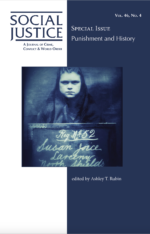Description
Crack in the Rearview Mirror: Deconstructing Drug War Mythology
This article summarizes the history of the media and political machinations that produced the “crack epidemic.” In documenting the myths produced, it gives insight into the larger issue of how drug laws in the U.S. have helped to drive the most massive wave of imprisonment in its history since the Depression of the 1930s. It is an important contribution to our understanding of the media-political influence on the definition of acts as criminal and on the labeling process. The article refutes five myths concerning crack: that crack is a different drug than cocaine; that crack is instantly and inevitably addicting; that crack spread to all sectors of society; that crack causes crime and violence; and that crack use during pregnancy produces crack babies. The authors conclude that there are obvious humanitarian reasons why all these myths still matter. They can be read as so many discursive walls imprisoning public understanding of drug problems and drug policy. They helped to create and sustain a drug scare that resulted in an unprecedented wave of imprisonment, disproportionately of poor people of color. But there are also pragmatic, utilitarian reasons why we should rethink the harsh laws and policies that emerged from the crack scare. The scare and the racist repression it fomented have further eroded the legitimacy of the criminal justice system.
drug policy, media, crack cocaine, myths concerning the “crack epidemic”
Citation: Social Justice Vol. 31, Nos. 1-2 (2004): 182-199


